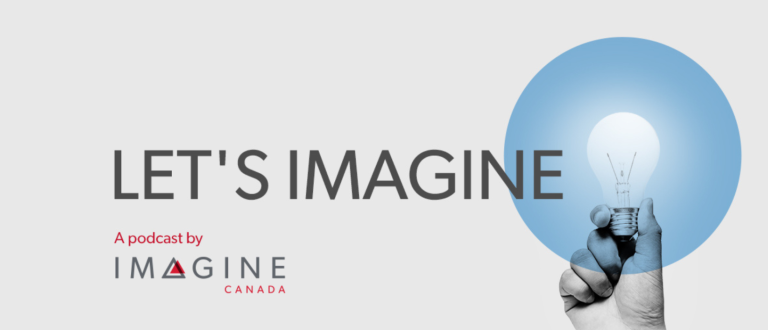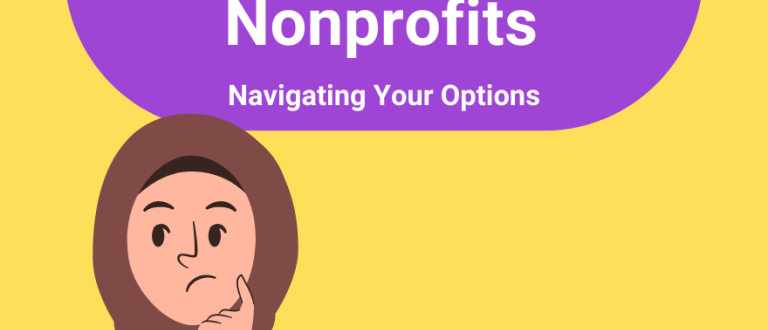Last updated on January 7, 2021.
As charities and nonprofits continue to serve their communities while managing the impacts felt from the COVID-19 crisis, rising cases across the country spell the onset of a second wave.
Fortunately, the Government of Canada recently announced updates on a series of federal supports available to charities and nonprofits affected by the pandemic. These supports will help organizations retain staff, pay rent, and maintain positive cash flow, and collectively they represent a significant introduction of money into the charitable and nonprofit sector. Here is what charities and nonprofits need to know about the recent updates.
Note: Legislation extending the Canada Emergency Wage Subsidy (CEWS) and introducing the Canada Emergency Rent Subsidy (CERS) passed and received Royal Assent on November 19, 2020. This post has been most recently updated to reflect proposed changes announced in the Fall Economic Statement 2020. Further details about the supports listed below will be updated in this post once they are available.
Canada Emergency Wage Subsidy (CEWS)
What is it?
The Canada Emergency Wage Subsidy (CEWS) is a program that seeks to help employers keep workers on the payroll and encourage employers to re-hire workers previously laid off by providing a subsidy to cover a portion of employees’ wages, salaries, and other forms of eligible remuneration. This program is administered by the Canada Revenue Agency (CRA).
What is the update?
(Click here to access the Government of Canada’s technical backgrounder, which elaborates on the details below.)
- The CEWS has been extended until June 2021, although new details about the program are only until March 13, 2021 (details for periods beyond March 13, 2021 will be proposed at a later date).
- The rate for the base subsidy introduced to the program in July 2020 will be frozen at a maximum of 40% for September 27 to December 19, 2020. Previously, the maximum rate for the base subsidy was scheduled to decline to 20% beginning October 25, 2020.
- The top-up subsidy rate (up to 25%) remains the same until December 19, 2020; however, the way it is calculated will be changed. Effective September 27, 2020, the revenue-decline test for the top-up will be determined by the change in monthly revenues, year-over-year, for the current or previous calendar month, or by the change in monthly revenues relative to the average of January and February 2020 revenues. Previously, revenue decline for the top-up was calculated by comparing the average monthly revenue for the three months preceding a claim period to either the same three months in the previous year or to the average of January and February 2020 revenues.
- As of December 18, 2020, the maximum subsidy rate (i.e., base + top-up) has been raised to 75% for December 20, 2020 to March 13, 2021. The maximum base rate remains at 40%, while the top-up subsidy has been increased to 35%.
- Effective September 27, 2020, eligible employers will receive a top-up subsidy rate that is no less than if they would have calculated it using the three-month revenue-decline test.
- Effective October 25, 2020, the wage subsidy for furloughed employees (i.e., employees on paid leave) will be aligned with the benefits provided through Employment Insurance. The maximum subsidy amount per week available for furloughed employees will be $573. As per the Fall Economic Statement 2020, the maximum subsidy amount per week for furloughed employees is proposed to increase to $595 for December 20, 2020 to March 13, 2021.
- For July 5 to December 19, 2020, a special baseline remuneration period has been added in respect of an eligible employee returning from a continuous maternity, parental, caregiver, or long-term sick leave that began before July 1, 2019 and ended after March 15, 2020. The special remuneration period would be the 90-day period ending immediately before the beginning of the employee’s leave period.
Who is eligible?
To-date, registered charities and non-profit organizations must meet all of the following criteria to be eligible for the subsidy:
- Have had a CRA payroll program account on or before March 15, 2020 (or used a payroll service provider who made remittances on their behalf);
- They are not a public institution, which includes municipalities and local governments, Crown corporations, public universities, colleges and schools, school boards, hospitals, and health authorities; and
- Have experienced a drop in revenue for the month(s) relevant to the claim period(s) for which they are applying.
For further details about eligibility criteria, you can visit the Who can apply page on the Government of Canada’s CEWS webpage, and also visit the Frequently asked questions page which provides detailed information for specific questions about eligibility.
How can organizations apply?
Applications are currently open for periods from March 15, 2020 to December 19, 2020, with applications for the following period opening January 17, 2021. (This program is retroactive, so eligible employers can apply for the subsidy all the way back to March 15, 2020.)
The deadline to make an application for any claim period(s) from March 15 to August 29, 2020 is January 31, 2021. For the following periods, the deadline is 180 days after the end of the claim period for which the eligible employer is applying.
Eligible organizations are able to apply for the subsidy through their CRA My Business Account or the Web Forms application.
You may visit the CEWS webpage on the Government of Canada’s website to find further information and resources to help you apply.
One particularly helpful resource is the online calculator or calculation spreadsheet that applicants can use to calculate their subsidy before they apply. The calculator provides easy-to-follow steps that guides the user through all the information required to calculate their subsidy, and the user is then able to print this information off and use it to fill out their application.
Other helpful resources on the CEWS webpage are the Application guide and the Frequently asked questions page.
If these resources still leave unanswered questions that are preventing you from applying, you can call the CEWS general inquiries line at 1-833-966-2099, open Monday through Friday from 9AM to 6PM (local time), to speak with a representative.
Canada Emergency Rent Subsidy (CERS)
What is it?
The Canada Emergency Rent Subsidy (CERS) is a new program that will provide businesses, charities, and nonprofits with a subsidy that could cover up to 90% of eligible fixed property expenses, including rent and interest on commercial mortgages. This program will be administered by the Canada Revenue Agency (CRA).
What is the update?
(Click here to access the Government of Canada’s technical backgrounder, which elaborates on the details below.)
- Like the CEWS, this program will run until June 2021, and details about the program are only until March 13, 2021 (details for periods beyond March 13, 2021 will be proposed at a later date). Retroactive support will be available back to September 27, 2020.
- The base subsidy will cover a maximum 65% of eligible expenses until December 19, 2020 for organizations with a revenue drop of 70% or greater, with the base subsidy rate gradually reducing to zero for those not experiencing a decline in revenues. Revenues will be calculated in the same manner as under the Canada Emergency Wage Subsidy (CEWS) program. As per the Fall Economic Statement 2020, the Government has proposed an extension of this rate structure until March 13, 2021.
- Eligible expenses are limited to those paid under written agreements entered into before October 9, 2020 and include commercial rent, property taxes (including school taxes and municipal taxes), property insurance, and interest on commercial mortgages for a qualifying property, less any subleasing revenues. Expenses for each qualifying period are capped at $75,000 per location and there is an overall cap of $300,000.
- The government has stated it will introduce legislation to formalize rent payable as an eligible expense. Qualifying organizations will be able to take advantage of the rent subsidy on this basis as soon as the application portal is launched. This commitment was reiterated in the Fall Economic Statement 2020.
- A top-up subsidy of 25% will also be available for organizations temporarily shut down by a mandatory public health order issued by a qualifying public health authority. As per the Fall Economic Statement 2020, the Government has proposed an extension of this rate structure until March 13, 2021. To qualify, the following conditions must be met: i) the organization qualifies for the base CERS; ii) the public health order requires the organization to a) completely shut down the location; or, b) cease some or all of the activities at the location, and it is reasonable to conclude that the ceased activities were responsible for at least approximately 25% of revenues of the entity at that location in the appropriate pre-pandemic reference period.
- This program will replace the Canada Emergency Commercial Rent Assistance (CECRA) program that was announced in May 2020 and ran until September 30, 2020. The program was administered by the Canada Mortgage and Housing Corporation (CMHC) and offered forgivable loans to eligible commercial property owners to reduce rent owed by tenants to at least 75% for the months of April, May, and June 2020.
- This program will make it easier to access rent and mortgage support by providing the subsidy directly to the tenant rather than the landlord. Under CECRA, tenants had to ask their landlords to apply for relief.
Who is eligible?
Eligible entities for the CERS will generally be the same as eligible employers under the CEWS. Eligible entities must have experienced a drop in revenue and have eligible expenses for qualifying properties. Entities must also meet one of the following criteria to be eligible: a) have a payroll account as of March 15, 2020 or have been using a payroll service provider; or b) have a business number as of September 27, 2020 and satisfy the CRA that it is a bona fide rent subsidy claim.
For further details about eligibility criteria, you can visit the Who can apply page on the Government of Canada’s CERS webpage.
How can organizations apply?
Applications are currently open for the first three claim periods (September 27 to December 19, 2020). Upcoming period dates will be added soon. All applications must be made on or before 180 days after the end of the qualifying period.
Eligible entities are able to apply for the subsidy through their CRA My Business Account.
You may visit the CERS webpage on the Government of Canada’s website to find further information and resources to help you apply.
One particularly helpful resource is the online calculator that applicants can use to calculate their subsidy before they apply. The calculator provides easy-to-follow steps that guides the user through all the information required to calculate their subsidy, and the user is then able to print this information off and use it to fill out their application.
Another helpful resource on the CERS webpage include the How to fill out the application form.
If these resources still leave unanswered questions that are preventing you from applying, you can call the CRA’s business enquiries line at 1-800-959-5525, open Monday through Friday from 9AM to 8PM (local time), to speak with a representative.
Canada Emergency Business Account (CEBA)
What is it?
The Canada Emergency Business Account (CEBA) is a program launched in April 2020 that seeks to support small businesses and not-for-profits with temporarily reduced revenues by providing an interest-free loan to help cover non-deferrable operating expenses. The program is implemented by major financial institutions across Canada in cooperation with Export Development Canada.
What is the update?
- The program has been expanded to provide an interest-free loan of up to $20,000, half of which will be forgivable if repaid by December 31, 2022. This is in addition to the original CEBA loan of up to $40,000, up to 25% of which is forgivable if repaid by the same date. In total, eligible organizations could receive a total of $60,000 in interest-free loans and have $20,000 of that be forgiven.
- The application deadline for CEBA has been extended to March 31, 2021.
- Effective October 26, 2020, eligible organizations currently operating through a personal bank account will now be able to apply, though they will still be required to open a business chequing/operating account at a Canadian financial institution participating in CEBA. Previously, organizations must have had a business account before March 1, 2020 in order to apply.
Who is eligible?
To-date, not-for-profits must meet the following criteria to be eligible for the original and expanded CEBA loan:
- Be a non-profit organization, registered charity, union, or a fraternal benefit society or order, or an entity owned by such an organization, that is actively carrying on a business in Canada (including a related business in the case of a registered charity) that earns revenue from the regular supply of property/goods or services
- Have paid between $20,000 and $1,500,000 in total payroll in 2019. For applicants with 2019 total payroll lower than $20,000, they must have eligible non-deferrable expenses between $40,000 and $1,500,000
- Have a Canada Revenue Agency (CRA) Business Number (BN) with an effective date of registration on or prior to March 1, 2020
- Have filed a 2018 or 2019 tax return with the CRA
- Have an active business chequing/operating account with their primary financial institution
- Have not previously used the CEBA program and will not apply for support under the CEBA program at any other financial institution
- Intend to resume operations
- Agree to participate in post-funding surveys conducted by the Government of Canada
For more information about the above eligibility criteria for the original and expanded CEBA loan, visit the CEBA webpage on the Government of Canada’s website and/or contact your financial institution.
How can organizations apply?
As of December 4, 2020, eligible organizations are able to apply for the expanded CEBA loan (i.e., $20,000).
Organizations applying for the original and/or expanded CEBA loan must contact their financial institutions. Applicants that have received the $40,000 CEBA loan may apply for the $20,000 expansion. Eligible organizations must apply for the $20,000 expansion at the financial institution that provided the original $40,000 loan. Once the eligible organization's financial institution begins to offer the expansion, organizations may no longer apply for just the $40,000 loan - they must apply for the full $60,000 loan.
There are approximately 220 financial institutions participating in the CEBA program, including the following:
● ATB
● BMO Financial Group
● Canadian Western Bank
● CIBC
● HSBC Canada
● Laurentian Bank of Canada
● National Bank of Canada
● Royal Bank of Canada (RBC)
● Scotiabank
● TD Bank Group
Organizations will be required to make an attestation of the impact of COVID-19 on their business to access the additional financing.
For more information about how to apply for the original and/or expanded CEBA loan, visit the CEBA webpage on the Government of Canada’s website and/or contact your financial institution. A full list of participating financial institutions is also available on the same webpage.
_____________________________________
Visit our Wage Subsidy FAQs and Rent Subsidy FAQs for more information about the CEWS and the CERS in the form of commonly asked questions, and visit our Relief Measures Chart for details about these programs and other forms of federal support available for charities and nonprofits.
Sign-up for Imagine Canada’s Early Alert newsletter to stay informed about these federal supports, or contact Imagine Canada directly at publicpolicy@imaginecanada.ca with any questions or feedback about these supports.



